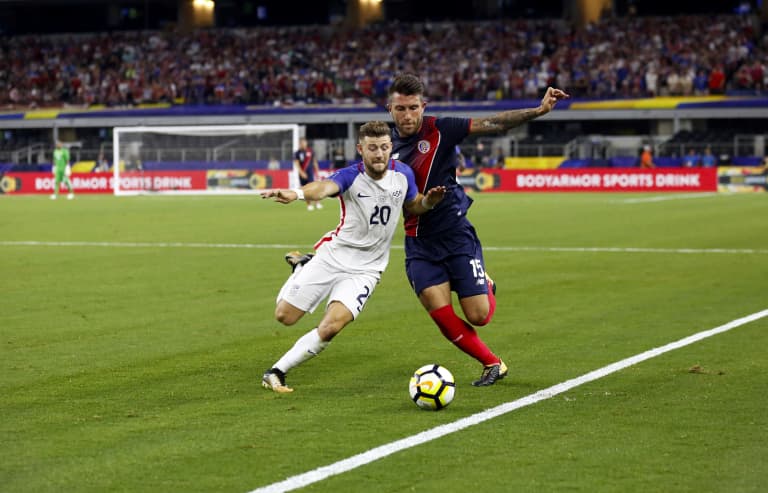The Concacaf Gold Cup is coming to Minnesota for the first time in 2019. Sixteen teams will battle it out to be named the champion of the confederation and earn a chance to play in the FIFA Confederations Cup in 2021. The tournament has become a summer tradition in the U.S., scratching that itch for international competition in the years between World Cups, and has helped increase the quality of the game across the continent.
Before we take a look at how the tournament came to be, here’s a quick breakdown of how the Gold Cup looks in 2019.

For the first time, 16 teams will qualify for the Gold Cup through two paths: the final six teams from World Cup qualifying and the top 10 teams from the upcoming Concacaf Nations League qualifying tournament. The teams will be divided into four groups, with the top two teams in each group advancing to the knockout rounds. The teams play a single-elimination bracket from there to determine the champion. The winner will then play the 2017 Gold Cup champion — the United States — in a playoff match for a spot at the 2021 Confederations Cup. If the U.S. wins the 2019 tournament as well, it will get an automatic spot in the Confederations Cup.
Now let’s go back to 1991 when the first Gold Cup was founded. The tournament was set to replace the Concacaf Championship, which followed round-robin format with anywhere from four to nine teams competing for the confederation title. The Gold Cup sought to bring a format that was widely used in other parts of the world to the confederation’s championship and bring the excitement of a playoff that many fans could enjoy.
The U.S. hosted the first edition of the Gold Cup and has been the host for every tournament since. Occasionally, matches are hosted in Mexico and Canada, but that has only happened in three tournaments. Estadio Azteca featured prominently in the 1993 and 2003 Gold Cups and BMO Field in Toronto was the site of the final Group B matches in 2015.
The U.S. went on to win the first Gold Cup, with Mexico claiming the title two years later. This set up a power struggle between the giants of North America. The two nations have won the title nearly every single time, with Mexico winning seven championships and the U.S. six. Canada, featuring MNUFC assistant coach Mark Watson, broke the cycle in 2000, shocking everyone with a stunning victory over Colombia after it had escaped the group stage by winning a coin toss.
Colombia is one of many guest nations outside of Concacaf who have been invited to compete in Gold Cup. Many of the guest teams came from South America, including Brazil and Peru, but others including South Korea and Djibouti have made the long trek to take on Concacaf’s best. Brazil was involved in some of the most exciting matches in the tournament’s history, including a nail-biting 1-0 loss to the U.S. in the 1998 semifinals that featured arguably the best display of goalkeeping in U.S. soccer history by Kasey Keller.
The Gold Cup has given many of the nations in the confederation more opportunities to play meaningful matches against high-level opponents. Smaller countries that are usually knocked out in the early rounds of qualifying for big tournaments like the World Cup are able to shake things up and make a name for themselves in the Gold Cup. In recent years, Jamaica has gone from an “also competed” to knocking on the door as a title contender with back-to-back appearances in the final in 2015 and 2017. In 2007, the French islands of Guadaloupe made an unprecedented run for third place, beating Canada and future World Cup contender Honduras along the way.

The Gold Cup has had many historic moments and certainly more will be made next summer at Allianz Field. Will we witness the United States win back-to-back titles? Can Mexico reclaim the top spot in Concacaf? Or will the likes of Costa Rica buck the trend and lift the trophy themselves? Only time will tell, but it will be worth the wait.





